Hominin footprints from early Pleistocene deposits at Happisburgh, UK
- PMID: 24516637
- PMCID: PMC3917592
- DOI: 10.1371/journal.pone.0088329
Hominin footprints from early Pleistocene deposits at Happisburgh, UK
Abstract
Investigations at Happisburgh, UK, have revealed the oldest known hominin footprint surface outside Africa at between ca. 1 million and 0.78 million years ago. The site has long been recognised for the preservation of sediments containing Early Pleistocene fauna and flora, but since 2005 has also yielded humanly made flint artefacts, extending the record of human occupation of northern Europe by at least 350,000 years. The sediments consist of sands, gravels and laminated silts laid down by a large river within the upper reaches of its estuary. In May 2013 extensive areas of the laminated sediments were exposed on the foreshore. On the surface of one of the laminated silt horizons a series of hollows was revealed in an area of ca. 12 m(2). The surface was recorded using multi-image photogrammetry which showed that the hollows are distinctly elongated and the majority fall within the range of juvenile to adult hominin foot sizes. In many cases the arch and front/back of the foot can be identified and in one case the impression of toes can be seen. Using foot length to stature ratios, the hominins are estimated to have been between ca. 0.93 and 1.73 m in height, suggestive of a group of mixed ages. The orientation of the prints indicates movement in a southerly direction on mud-flats along the river edge. Early Pleistocene human fossils are extremely rare in Europe, with no evidence from the UK. The only known species in western Europe of a similar age is Homo antecessor, whose fossil remains have been found at Atapuerca, Spain. The foot sizes and estimated stature of the hominins from Happisburgh fall within the range derived from the fossil evidence of Homo antecessor.
Conflict of interest statement
Figures

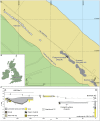
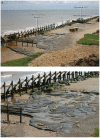
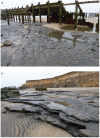

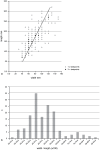

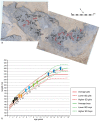


References
-
- Leakey MD, Hay RL (1979) Pliocene footprints in the Laetoli Beds at Laetoli, northern Tanzania. Nature 278: 317–323.
-
- Behrensmeyer AK, Laporte LF (1981) Footprints of a Pleistocene hominid in northern Kenya. Nature 289: 167–169.
-
- Roberts D, Berger LR (1997) Last interglacial (c. 117 kyr) human footprints from South Africa. S Afr J Sci 93: 349–350.
-
- Mietto P, Avanzini M, Rolandi G (2003) Palaeontology: Human footprints in Pleistocene volcanic ash. Nature 422: 133. - PubMed
-
- Onac BP, Viehmann I, Lundberg J, Lauritzen SE, Stringer CB, et al. (2005) U–Th ages constraining the Neanderthal footprint at Vârtop Cave, Romania. Quat Sci Rev 24: 1151–1157.
Publication types
MeSH terms
LinkOut - more resources
Full Text Sources
Other Literature Sources
Medical

